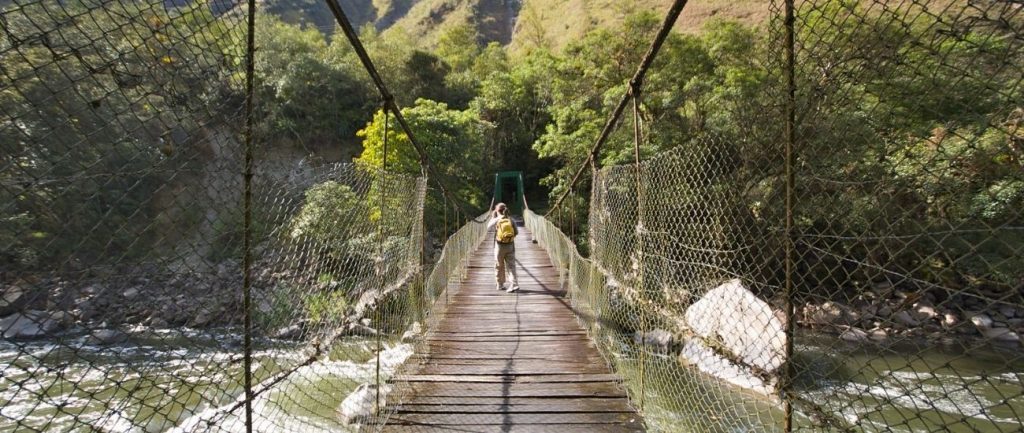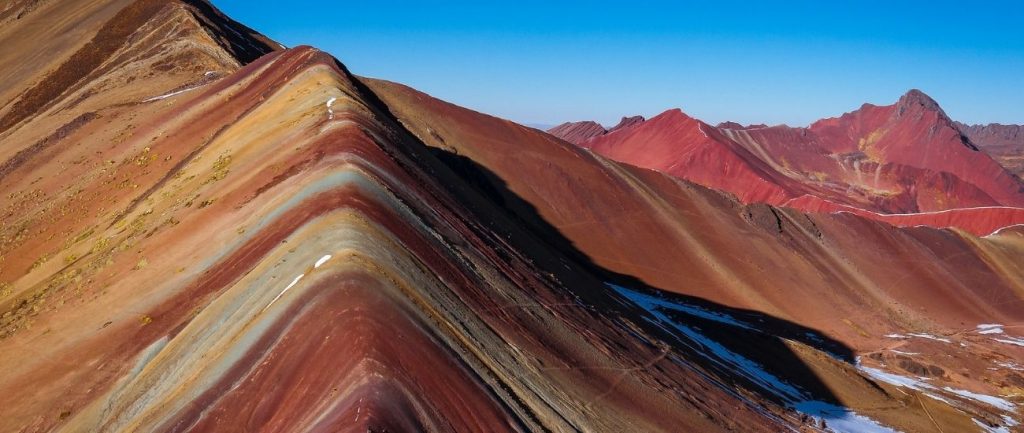Among so many charming destinations, we know that one of Peru’s strengths is the paths that cross the Andes and open trails with some of the most beautiful landscapes that all its visitors have ever seen. It is not by chance that countless travelers from all over the world choose Peruvian lands as a destination for their trips full of emotion.
The ancient country of the Incas certainly holds many adventures, but not only that, for that reason, we like to reinforce that Peru’s diversity allows people of all tastes and traveler profiles to experience the most incredible memories in this country, which is full of culture, history, art, hospitality, luxury and, of course, adrenaline pumping activities too.
And these differentiated activities, suitable for adventurous spirits, draw a lot of attention from those who are planning their trip to Peru, and we know how important it is to have all the necessary information to make your dream come true in the best possible way and without any setbacks, which can make the experience more difficult than it needs to be.
With that in mind, we created this article thinking to guide you through the main and recurring doubts that many hikers have while they are organizing their itinerary with the anxiety of finally setting foot on the old Peruvian roads and paths. Knowing the simple to the most complex attitudes that require time is an important point for you to make the most of this experience.
In addition, it is important to remember that there are different types of trails that you can venture on while in Peru, and you can choose the ones that best suit your fitness profile, the degree of difficulty, the destination you want to visit, and, mainly, to its screenplay time.
Do you want to get closer to Peruvian nature on some adventure on your trip to Peru? So, embark on this basic knowledge trail with Viagens Machu Picchu to prepare for this experience and know exactly what to do before and during these tours!
Discover the main treks in Peru
To give you a glimpse of what awaits you on your next adventure in Peru or, for those who still don’t know, we are going to introduce you to some of the most famous trails in our country. These are just some of the options that you will find and involve some of the most popular tourist attractions, especially in the region of Cusco, where attractions such as Rainbow Mountain and the famous citadel of Machu Picchu are concentrated. But you might also like the Inca Lares Trail or Inca Jungle Trail and many other amazing ones.
However, all Peruvian regions cover trails with different characteristics and, without a doubt, with options that are democratic for all levels of experience and physical preparation, in this way, even beginners have the chance to get to know some of the most fascinating scenarios up close. of Peruvian lands.
Therefore, here you will find a presentation of the three most popular options among travelers, but keep in mind that these are not the only possibilities if you are interested in venturing out on your next trip to our millenary country. Are you ready? So let’s go!
Inca Trail Trek

We do not doubt that the Inca Trail is one of the best-known in Peru. This is because not only does this route lead to the famous Historic Sanctuary of Machu Picchu, this route was created and extremely used by the Inca people, at the time of the height of the Inca Fortress Tahuantinsuyo.
The Inca Trail was part of a network of trails that connected different parts of the empire of these powerful people, covering some different countries in South America, such as Brazil, Colombia, Bolivia, Chile, as well as Peru itself. In other words, whoever takes this route takes a real plunge into the history of these people, especially if they also allow their imagination to run wild.
There are two ways to do the Inca Hiking Trail and the most interesting thing about it is being able to adapt the options to your itinerary, since in the Classic Inca Trail model it takes about 4 days trek to complete the day trip from Cusco, passing for Aguas Calientes “hot springs” to the Inca Citadel through the Sacred Valley, in the Short Inca Trail version, you only need 2 days hike.
This trail is a great option for cloud forest lovers, but who focus on getting even closer to the history of this civilization, since along the way there are numerous Inca ruins with different functions and constructions, all linked to the ancient people.
Salkantay Trek

This is another option for those who want to make their trek to Machu Picchu even more memorable. The Salkantay Trail has a very strong scenic appeal and, without a doubt, is for adventurers who have more experience in this type of activity, as the path reaches an altitude of approximately 4,600 meters above sea level.
The route in question requires up to 5 days for the hikers to be available to be carried out successfully. All along the way, you can see the giant Apu Salkantay, considered by the locals as a protective spirit, which is also one of the highest peaks in Peru.
In addition, one of the strengths of this trail is being able to appreciate the beauty and uniqueness of the famous Humantay lake, one of the stopping points on the way, which makes every effort made on this path worth it, in addition to being something surreal to be able to rest around a beautiful turquoise water lagoon.
Trek to Rainbow Mountain

This is a gem of the Peruvian Andes and the Cusco region, which has attracted thousands of visitors a year, who are completely enchanted by its beauty and uniqueness. The Rainbow Mountain we are talking about is Vinicunca, the highest in Peru, whose summit reaches 5,200 meters above sea level, from where it is also possible to contemplate a unique view of a masterpiece of nature.
Unlike the giants mentioned above, the 7 Cores Mountain trail, which leads to the top of Vinicunca, requires only a few hours to complete, so full-day excursions are made for this. However, do not think that this factor makes it easier than the others, as the altitude can make everything more complicated.
But don’t worry, if your dream is to see a colorful mountain up close, there is another option to turn to, in case you don’t feel comfortable with your physical condition, we are talking about Palcoyo Mountain, which can be as charming as the giant Vinicunca.
Tips for trekking in Peru
What to take?
To carry out these long journeys, it is important to remember that some porters will accompany you in this endeavor, however, keeping in mind the need to avoid excesses is essential, and in your backpack always carry the most requested items on the way and that need to be within reach.
In addition to snacks and quick and energetic snacks for the long walks, some tips on what to take on the trail also include a personal hygiene kit (such as toilet paper, towel, and oral hygiene items); sleeping bag; raincoat; clothes to dress in layers (from heat to cold); trail shoes; flashlight; sun protection kit (sunscreen, cap, sunglasses); First aid kit; coca leaves; your camera, which is an essential item; between others.
Fitness and high altitude sickness
As we mentioned before, taking care of your physical preparation is crucial to having a successful performance on your adventure, in addition, it is also important to prevent yourself from altitude sickness, taking all responsible attitudes before starting any trail.
So, if you don’t already have a physically active life, it’s important to start preparing now and, if physical exercises are already part of your routine, gradually intensifying your workouts will help you. As for altitude sickness, or soroche, it is important to schedule an acclimatization period of 2 to 3 days before your adventure, so that your body gets used to the geographic elevation, stay informed about everything about altitude sickness. and how to avoid it.
Weather on the trails
It is important to pay attention to the climate of the regions that are covered by the trails to avoid any unforeseen events. In general, trails like the Salkantay and the Inca Trail usually have dry weather in the winter months (around June to September) and a lot of rain and humidity in the summer (from October to March), however, it all depends on which attraction you go to. visit.
In Colored Mountain it is necessary to follow the weather to know if it will be snowing since in this case, it is impossible to see its attractive colors. Another detail related to the weather is the opening and closing of attractions, as is the case of the Inca Trail, which remains closed throughout February.
How to hike in Peru?
Last but not least, if you are wondering how to go trekking in the ancient country of the Incas, know that it is not allowed to do it alone, a regulated issue for the safety of all visitors. In addition, it is important to plan and buy the package at least 6 months in advance of the travel date.
Viagens Machu Picchu has many trekking packages in Peru full of adrenaline, so take the opportunity to be inspired and carry out this unforgettable adventure with us, with all the necessary infrastructure for you to make the most of your experience.
In addition, we also have travel packages to Peru with the most fascinating destinations in our country, be sure to get in touch with our team and start planning the trip of your dreams!

